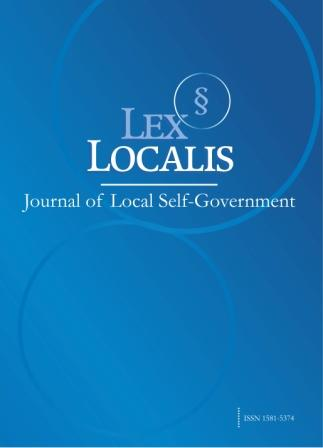Research on digital archive construction and community memory preservation model under the leadership of local governments and public libraries
DOI:
https://doi.org/10.52152/800096Keywords:
Digital Archives; Community Memory; Local Government Leadership; Public Libraries; Cultural Heritage PreservationAbstract
This study explores models of digital archive construction and community memory preservation under the leadership of local governments and public libraries in China. Employing a multiple case study approach, the research examines three representative initiatives: the Shanghai Library's City Memory Project, Guangzhou’s Intangible Cultural Heritage Digital Archive, and Suzhou’s Digital Silk Road Archives. The analysis reveals that each city adopted a distinct governance model—Shanghai implemented a top-down approach, Guangzhou utilised a public-private partnership, and Suzhou fostered a grassroots-driven initiative supported by government facilitation. While Shanghai’s project stands out for its technological sophistication, incorporating advanced tools such as AI and blockchain, Suzhou’s initiative emerged as the most effective overall in terms of stakeholder engagement, inclusiveness, and long-term sustainability. The success of Suzhou’s model lies in its emphasis on multi-stakeholder collaboration and the integration of diverse cultural narratives into the digital archive. The study finds that a hybrid approach to governance—where the government leads, the community gets involved, and experts contribute—seems to be the best way to create sustainable and inclusive digital archives and preserve community memories.
References
Anderson, C. B., & Lawor, B. (2020). Preservation and archiving of digital media. Information Services and Use, 40(3), 201-208.
Ansell, C., & Gash, A. (2008). Collaborative governance in theory and practice. Journal of Public Administration Research and Theory, 23(1), 89-101.
Beaudoin, J. E. (2011). Spectres in the Archive: Faculty Digital Image Collections and the Problems of Invisibility. Journal of Academic Librarianship, 37(6), 488-494.
Brassey, C. (2020). Surfacing black and brown bodies in the digital archive: domestic workers in late nineteenth-century Australia. Journal of Historical Geography, 70, 1-11.
Bristow, A. (2023). From the archive with love: A tribute of memory and hope for the future of Organization. Organisation, 30(6), 1293-1303.
Castelluccio, M. (2018). Digital Disappearance. Strategic Finance, 100(5), 63-65.
Digby, t., & Durant, F. (2020). Normalising migration: Reacting to the failure of a digital preservation platform. Journal of Digital Media Management, 9(1), 30-39.
Digby, T., & Durant, F. (2020). Normalising migration: Reacting to the failure of a digital preservation platform. Journal of Urban Regeneration & Renewal, 14(1), 30-39.
Fenton, E. G. (2008). Responding to the Preservation Challenge: Portico, an Electronic Archiving Service. Journal of Library Administration, 48(1), 31-40.
Guangzhou Library. (2022). Intangible cultural heritage digital archive: Project documentation. Retrieved from http://www.gzlib.gov.cn/
Hallbwachs, M. (1992). On Collective Memory. London: Sage Publication.
Hunsaker, A. J., & Rocke, L. (2019). Street art in the library: Transforming spray paint into a digital archive and virtual reality experience. Journal of Digital Media Management, 7(3), 279-291.
Jaafar, S. A., Rasam, A. R., & Mohammad, A. A. (2022). Smart Hardcopy Mapping Products Practices in University Records Management Program: The Ideal Criteria and Procedures for UiTM Library Archive. Global Business and Management Research, 14(1), 108-118.
Kim, S. U., Choi, Y., & Myntti, J. (2022). Looking inside of the Utah COVID-19 digital collection as a community archive. Journal of Academic Librarianship, 48(1), 26-38.
Lee, H. E., Kim, H., & Lee, L. (2018). Momentous moment: Rediscovering Korean history through digitizing private letters. IFLA Journal, 44(4)(https://doi-org.hallam.idm.oclc.org/10.1177/0340035218785).
Lin, C. S., & Eschenfelder, K. R. (2010). Librarian-initiated publications discovery: How do digital depository librarians discover and select web-based government publications for state digital depositories? Government Information Quarterly, 27(3), 292-304.
Liu, J., & Daoling, Y. (2007). Status of the preservation of digital resources in China: results of a survey. Program electronic library and information systems, 41(1), 35-46.
National Archives Administration of China. (2022). Guidelines for digital heritage preservation. Retrieved from http://www.archives.gov.cn/
National Library of China. (2022). AI metadata tagging pilot: Technical whitepaper. Retrieved from http://www.nlc.cn/
O'Brien, E. P., & Carlson, A. L. (2025). Digital solutions and process optimisation: A case study at a small university archive. Journal of Digital Media Management, 13(3), 291-298.
Okpoti, R. (2025). Art Gallery and Museum Libraries: Characteristics and Evolving Services. Encyclopaedia of Libraries, Librarianship, and Information Science, 1, 276-280.
Ringel, S., & Ribak, R. (2021). 'Place a book and walk away': archival digitization as a socio-technical practice. Information, Communication & Society, 24(15), 2293-2306.
Romabalies, K., Lanthoren, A., Lucas, A., & Lamont, L. (2020). Ethics, sustainability and the challenge of digital curation for a real-time archive. Journal of Urban Regeneration and Renewal, 14(1), 63-70.
Rustad, K. (2006). Our digital heritage as source material to end-users: Collection of and access to net publications in The National Library of Norway. Journal of Digital Assets Management, 2(3/4), 172-177.
Shanghai Municipal Government. (2023). Shanghai smart city initiative: Annual implementation report. Retrieved from http://www.shanghai.gov.cn/
State Council of China. (2022). National cultural digitization strategy (2022–2035). Retrieved from http://www.gov.cn/
Suzhou Bureau of Culture. (2023). Digital Silk Road archives: Tourism integration report. Retrieved from http://www.suzhou.gov.cn/
UNESCO. (2021). Safeguarding intangible heritage in China. Retrieved from https://unesdoc.unesco.org/
Verheul, I., & Wijngaarden, H. V. (2017). Measuring Progress: Recent Developments in Digital Preservation in the Library Community. Journal of Indexing and metrics, 9(2)(https://doi-org.hallam.idm.oclc.org/10.1177/09557490070190).
Wiggins, R. (2001). Digital preservation Paradox & Promise. (cover story). Library Journal, 126(7), 7-12.
Yano, C., Shen, Z. J., & Chan, S. (2013). Optimising the number of copies and storage protocols for print preservation of research journals. International Journal of Production Research, 51(23/24), 7456-7469.
Yuting, P., Yinfeng, J., & Jingli, Z. (2023). Current status of digital humanities research in Taiwan. Heliyon, e15851, 9(5).
Zastrwo, J. (2014). The Digital Archivist. Taking the Long View: Surveying Collections for Preservation and Digitization Priorities. Computers in Libraries, 34(4), 22-24.
Downloads
Published
Issue
Section
License
Copyright (c) 2025 Lex localis - Journal of Local Self-Government

This work is licensed under a Creative Commons Attribution-NonCommercial-NoDerivatives 4.0 International License.








